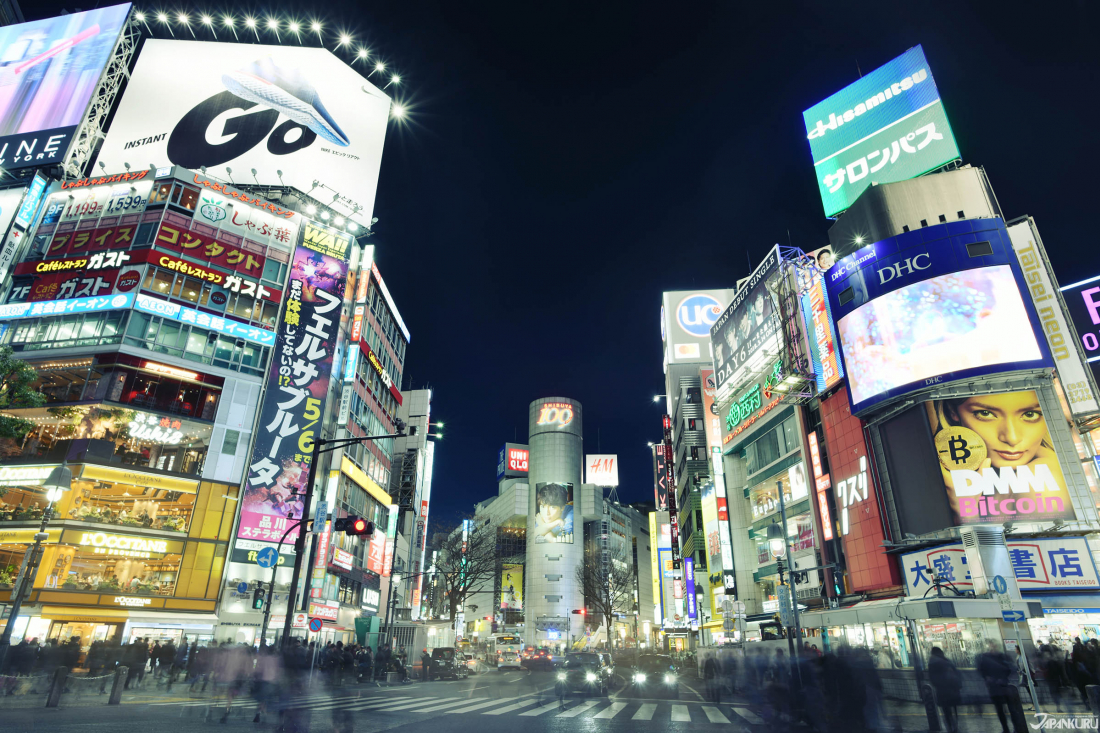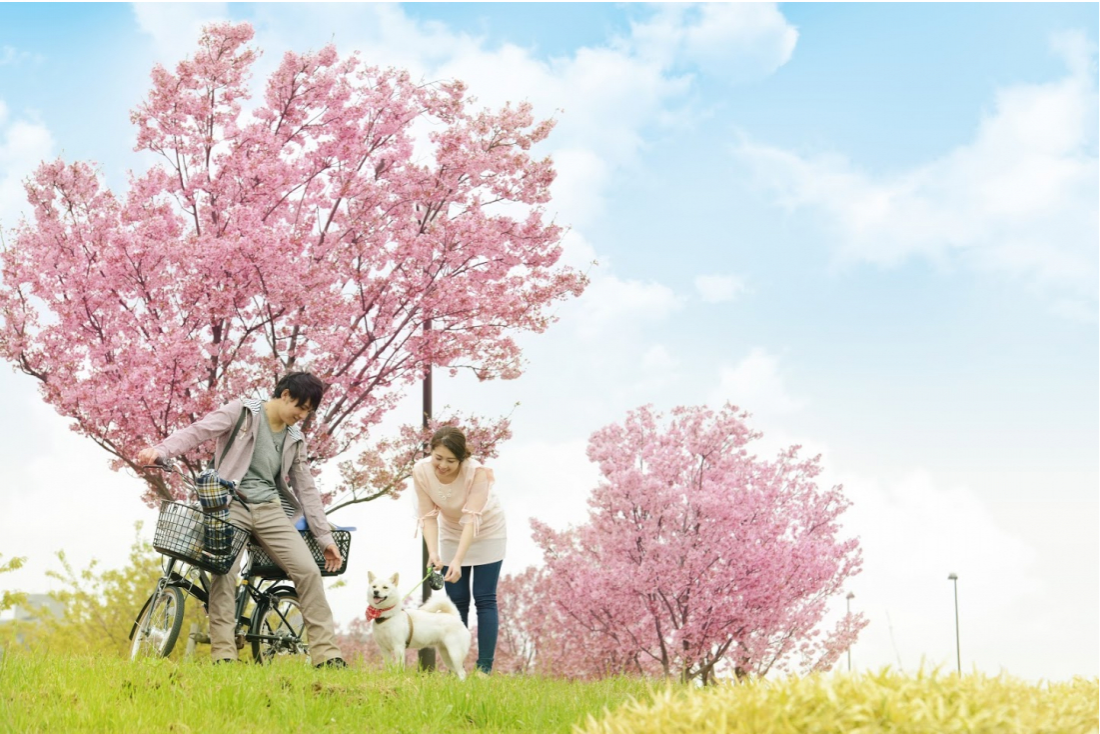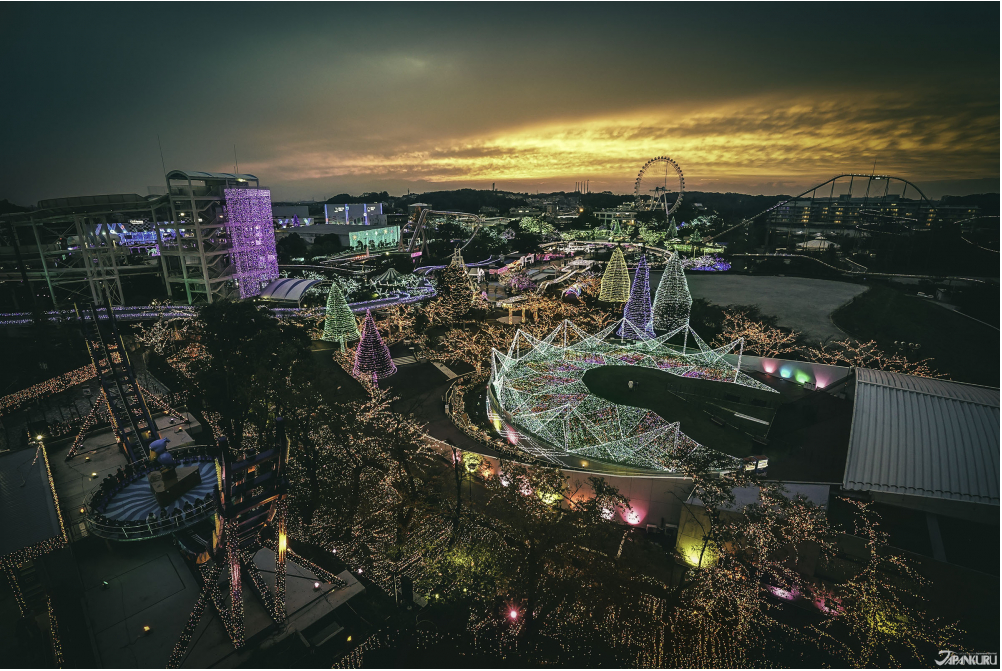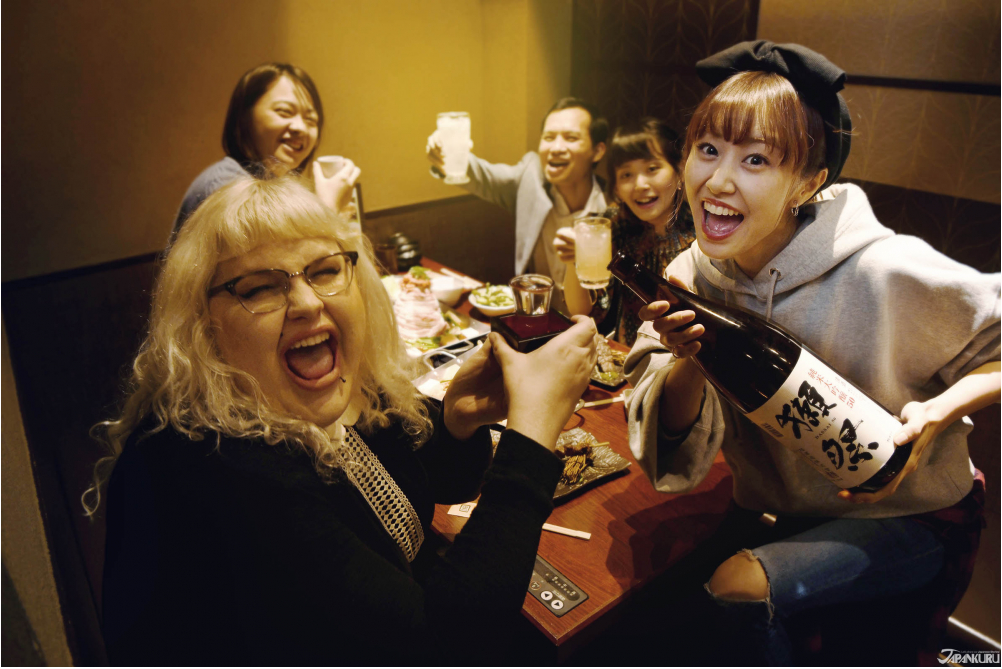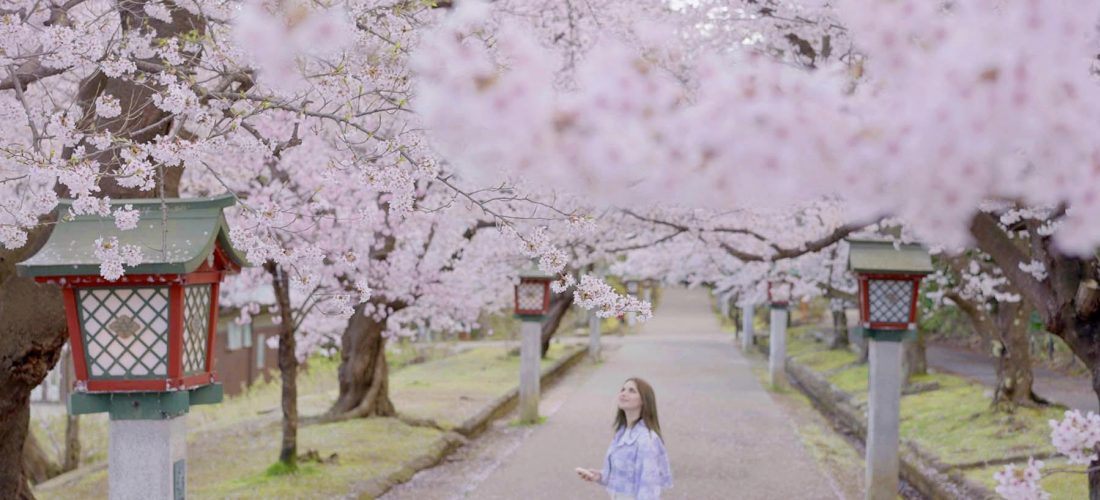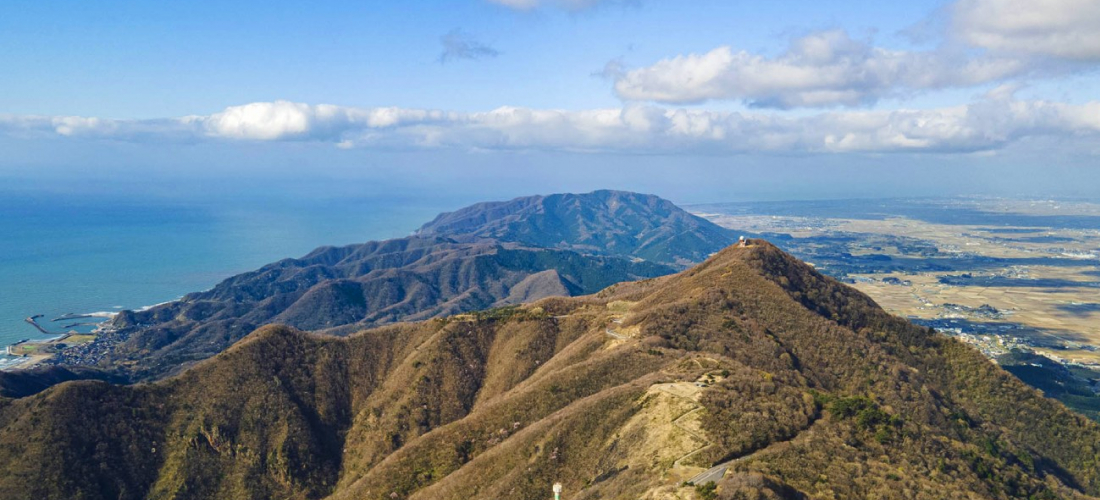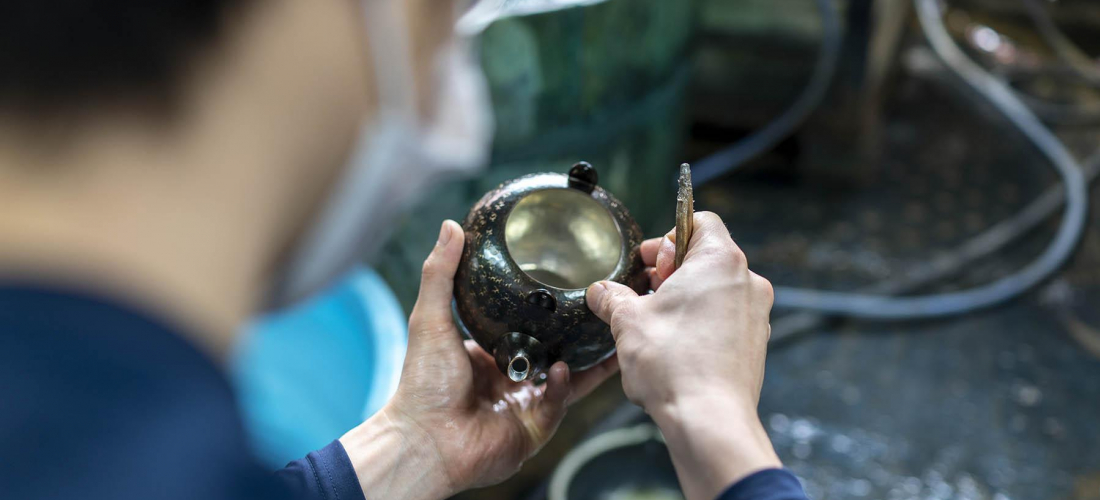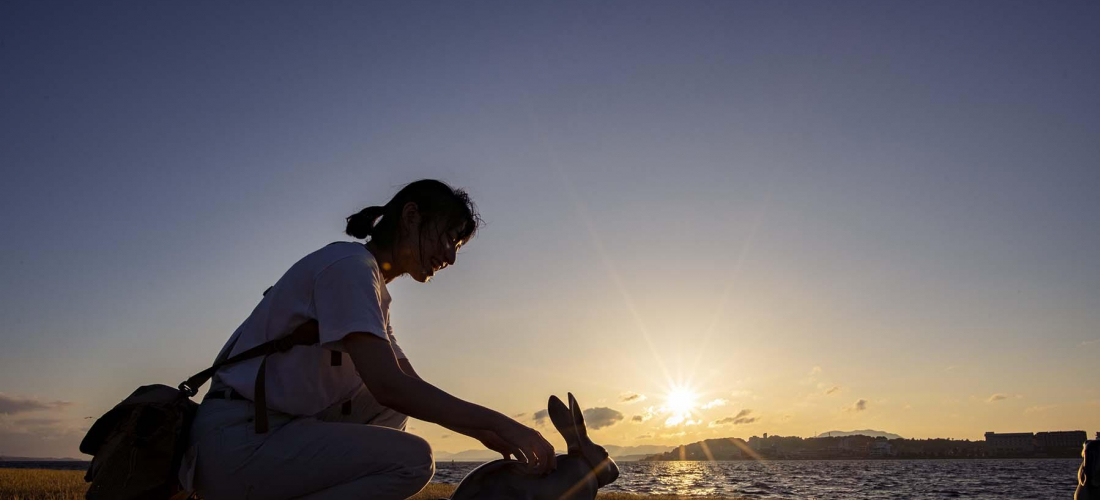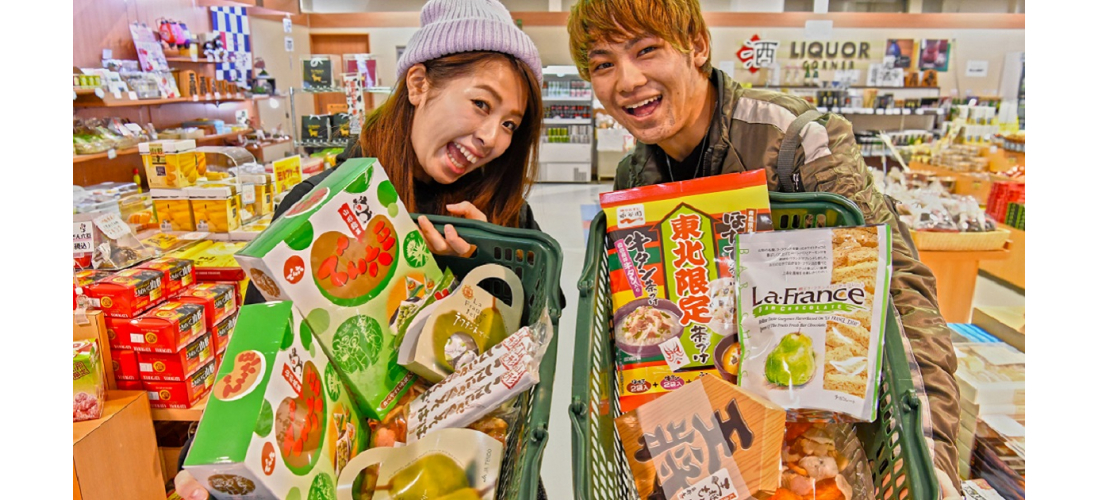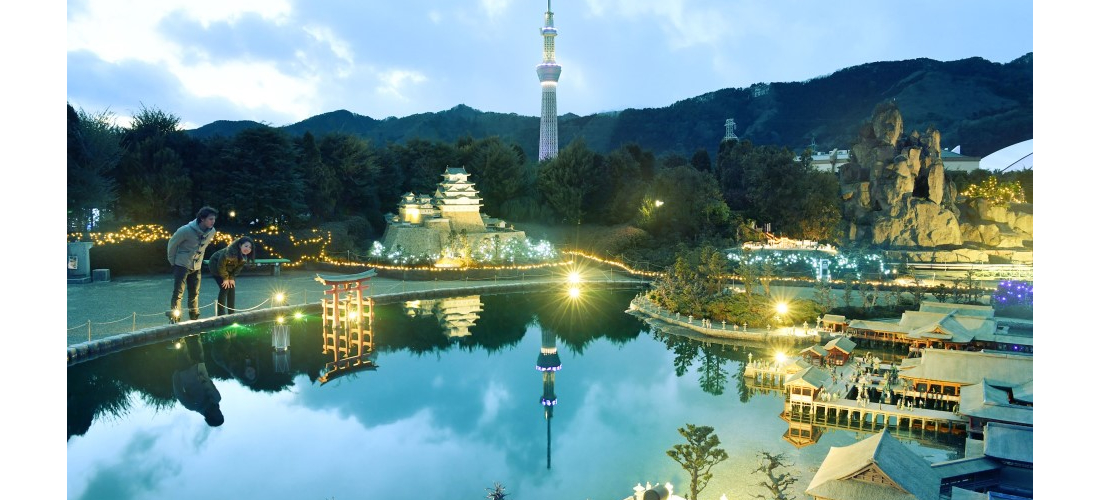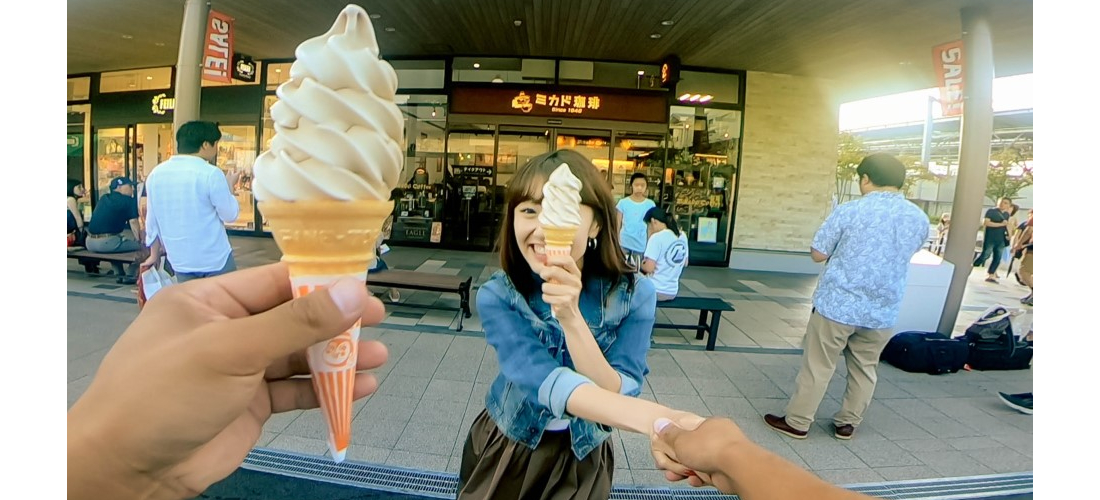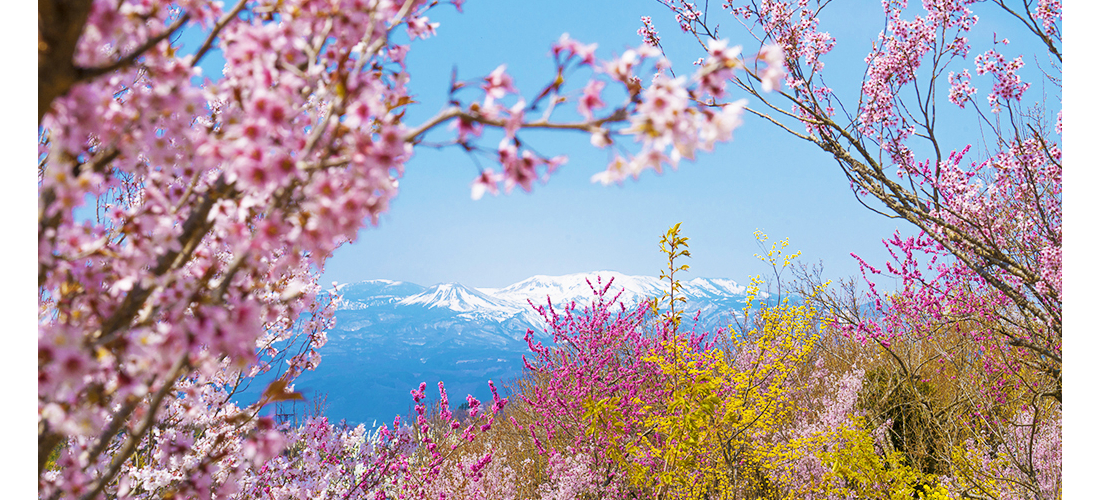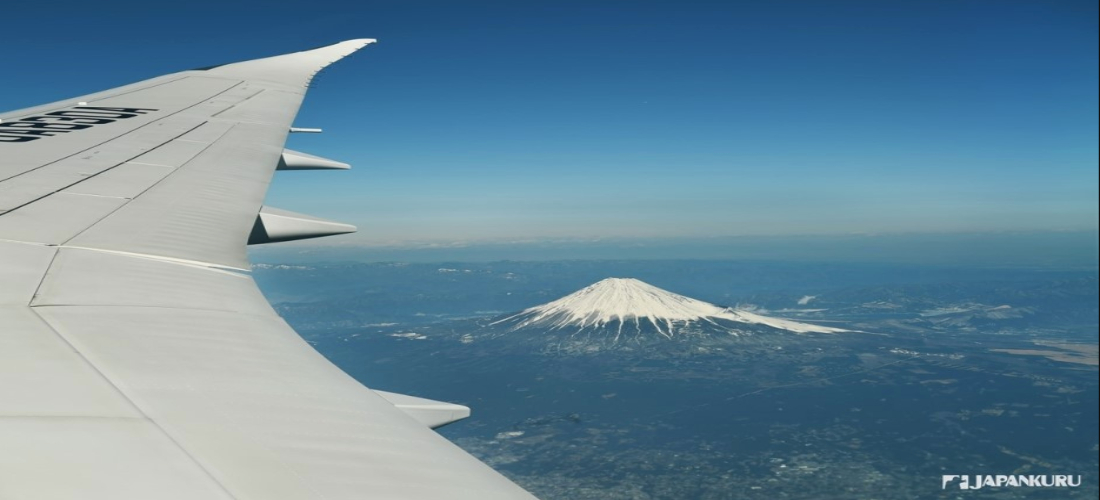
CONTENTS
Bạn sẽ làm gì đầu tiền khi đặt chân tới Nhật? Bạn sẽ ăn gì hay đi đâu?
Nhật Bản là nước nằm trong top 10 đất nước an toàn nhất thế giới ( cũng là một trong những có nền văn hóa … lạ ). Ngoài chuẩn bị trước một vài đoạn hội thoại bằng tiếng Nhật đơn giản, bạn chắc chắn nên tham khảo qua những địa điểm mà JAPANKURU đem tới hôm nay đó!
1.Những ngày nghỉ lễ truyền thống ở Nhật
Như bất cứ đất nước nào khác, vào ngày lễ những con đường ở Nhật cũng vô cùng đông đúc náo nhiệt. Vì thế tới Nhật du lịch vào thời điểm này cũng khá thú vị, vừa được tận mắt nhìn thấy văn hóa của họ, lại được giao lưu với người dân nơi đây. Tại Nhật có 3 ngày lễ lớn: Năm Mới, Tuần lễ vàng ( cuối tháng 4 và đầu tháng 5), và tháng 8
✴Năm mới(お正月): Hầu hết các nước phương Tây đều đón năm mới chung với kì nghỉ Giáng Sinh. Nhưng tại Nhật, Noel chỉ là một ngày lễ thông thường ( như ngày valentine vì hầu như chỉ các cặp đôi sẽ ăn mừng vào ngày này ). Thay vào đó, người Nhật sẽ ăn mừng năm mới vào dịp tết Dương, các ngày nghĩ lễ sẽ vào khoảng 29 tháng 12 đến ngày 3 tháng 1, nhưng hầu hết các công ty sẽ nghỉ hết tuần đầu của tháng 1, nên ngày nghỉ Tết của người Nhật trung bình sẽ vào khoảng 10 ngày hàng năm.
✴Tuần Lễ Vàng (ゴールデンウイーク): Tuần lễ vàng thường sẽ bắt đầu vào ngày 29 tháng 4 hàng năm – ngày Showa (昭和の日) và kết thúc vào ngày 5 tháng 5 – ngày lễ thiếu nhi (子供の日), nhưng từ năm 2019, Hoàng Đễ của Nhật đã thay đổi vì vậy, ngày lễ này sẽ bắt đầu từ ngày 27 tháng 4 đến 6 tháng 5 từ nay. Đây là thời điểm được coi là đông đúc nhất trong năm nên hãy cân nhắc trước khi tới nhé.
✴Lễ Obon (お盆): Hay còn được biết tới với cái tên Tuần Lễ Bạc. Obon là ngày lễ để tưởng nhớ về tổ tiên. Cũng giống như ngày Vu lan báo hiếu ở Việt Nam. Chỉ khác là ở Nhật họ sẽ được nghỉ để về thăm gia đình trong một khoảng thời gian dài.
2. Những lễ hội ở Nhật Bản
Ở Nhật có rất rất nhiều lễ hội mà có lẽ không thể kể tên hết được trong bài viết lần này. Mọt trong những lễ hội lớn như lễ hội ngắm hoa anh đào (花見; hanami)h hay lễ hội tuyết Sapporo (雪まつり; yuki matsuri). Và vô vàn các lễ hội lớn được diễn ra vào mùa hè nữa ( có lẽ đây là thời điểm đẹp nhất !)
・Tháng 1: Hatsumode Ngày cầu an đầu năm (初詣), Greeting from the Emperor, Lucky Bag shopping (福袋; fuku bukuro), Miyoshi Bondensai (三吉梵天祭), Nozawa Fire Festival (道祖神火祭り), Nagasaki Lantern Festival (長崎提灯祭り) Sumo Tournaments in Tokyo
・February: Sapporo Snow Festival (さっぽろ雪まつり), Asahikawa Winter Festival (旭川冬まつり), Setsubun (節分), Plum Blossom (梅)
・March: Hina Festival "Girl's Day" (ひな祭り), Daruma Festival (だるま祭り), Plum Blossom (梅), Omizutori (お水取り), Sumo Tournaments in Osaka
・Tháng 4: Lễ hội Kanamara "Lễ hội dương vậtl" (かなまら祭り), Lễ hội ngắm Hoa Anh Đào (花見; hanami), Lễ hội Takayama (高山祭), Lễ hội Onbashira (式年造営御柱大祭), Lễ hội suối nước nóng Beppu (別府八湯温泉まつり)
・Tháng 5: Lễ hội Hakata Dontaku (博多どんたく), Lễ hội Aoi (葵祭り), Khu vườn Kawachi Fujien (河内藤園)
・Tháng 6: Lễ hội Hoa Cẩm Tú Cầu (あじさい祭り), Lễ hội Đom Đóm (蛍祭り), Lễ hội Sanno (山王祭り)
・Tháng 7: Lễ hội Pháo Hoa (花火大会), Lễ hội Tanabata (七夕まつり), Lễ Obon (お盆), Lễ hội Gion (祇園祭), Lễ hội Mitama (みたままつり), Lễ hội Tenjin (天神祭), Giải đấu Sumo ở Nagoya
・Tháng 8: Lễ hội Iwamori Nebuta (ねぶた祭), Lễ hội Sendai Tanabata (七夕まつり), Lễ hội Kyoto Gozan no Okuribi (五山送り火), Lễ hội Nhảy Tokyo Koenji Awa Odori (高円寺阿波おどり), Lễ hội Yosakoi Tokyo Harajuku Omotesando (原宿表参道元氣祭 スーパーよさこいl), Lễ hội Hachioji (八王子祭り)
・Tháng 9: Lễ hội Meguro Kumin (目黒のSUNまつり)
・Tháng 10: Nagasaki Kunchi (長崎くんち), Tokyo Honmonji (御会式), Lễ hội lá đỏ (秋季祭)
・Tháng 11: Lễ hội Jingu Gaien Ginkgo (明治神宮外苑いちょう祭り), Shichi-go-san (七五三), Giải đấu Sumo ở Fukuoka
・Tháng 12: Illuminations, Lễ hội Kasuga Wakamiya (春日若宮おん祭), Namahage (なまはげ)
3. Những điểm nhất định phải tới một lần ở Nhật
・Tokyo: Hoàng cung Nhật Bản, Đền Meiji, Tháp Tokyo, Tokyo Skytree, Khu chợ Toyosu, Rạp Kịch Kabukiza
・Hokkaido: Bảo tàng bia Sapporo, Nhà máy rượu Nikka Whisky Yoichi Du thuyền Otaru
・Vùng Tohoku: Hiraizumi, Làng cáo Zao, Suối nước nóng Ginzan Onsen
・Vùng Kanto : Kawagoe, Hakone, Kamakura, Bảo tàng mì gói, Suối nước nóng Kusatsu Onsen
・Vùng Chubu: Núi Phú Sỹ, SNhà máy rượu Suntory Hakushu Whisky, Lâu đài Nagoya, Lâu đài Matsumoto
・Vùng Kansai: Kyoto, Lâu đài Osaka, Dotonbori, Universal Studios Japan
・Vùng Shikoku/Chugoku: Suối nước nóng Dogo Onsen, Lâu đài Matsuyama, Núi TsurugiPilgrimage , Đền Itsukushima
・Vùng Kyushu: Đền Dazaifu Tenmangu, Sakurajima, Lâu đài Kumamoto, Gunkanjima (Đảo Hashima)
・Okinawa: Thủy cung Okinawa Churaumi, Bãi Biển Toyosaki ở Emerald Sea, Vương quốc tím Murasaki Mura Ryukyu, Công Viên vui vẻ Orion Happy
4. Dịch vụ Sim và Wifi? Tới Nhật nên dùng điện thoại ra sao?
Với một đất nước phát triển như Nhật Bản, bạn có thể dễ dàng tìm thấy wifi ở nhiều nơi và hoàn toàn miễn phí. Tuy nhiên, sẽ mất thời gian cho việc truy cập vào một nhà mạng wifi miễn phí nào đó ( điền email và một chút thông tin cá nhân ) vì thế để tiết kiêm thời gian nhât, chúng mình nghĩ thuê một chiếc điện thoại hoặc sim du lịch sẽ giảm thiểu tối đa thời gian cho bạn nhất.
Có 2 lựa chọn cho bạn, đó là Sim du lịch hoặc Pocket Wifi, việc lựa chọn vào mức giá cũng như dung lượng đều tùy vào nhu cầu của mỗi người, may mắn là ở Nhât có rất nhiều lựa chọn cho bạn nên đừng lo lắng nhé.
Sim Trả Trước Pre-Paid SIM Card
Đây là lựa chọn đầu tiên của chúng mình muốn đưa tới. Bạn có thể dễ dàng tìm thấy các nhà mạng ở ngay sây bay, hơn nữa, lượng data và mức giá thì có rất nhiều cho bạn lựa chọn. Hầu hết các loại sim du lịch như vậy đều thuộc nhà mạng Docomo, một nhà mạng lớn của Nhật.
Ưu điểm: +Có thể dùng những app thông thường như Skype, Facebook, FaceTime, và Google Maps
+Dễ dàng lắp đặt
Nhươc điểm: – Hao tốn pin
–Điện thoại của bạn phải được bẻ khóa hoặc bản quốc tế mới có thể dùng được.
Pocket Wi-Fi
Pocket Wi-Fi là lựa chọn hoàn hảo cho một nhóm du lịch và cả nhóm sẽ dùng một số lượng data có hạn ( nên lưu ý không nên dùng quá vì thường khó kiểm soát do số lượng người dùng quá đông )
Ưu điểm: +Có thể dùng được cả những vùng ngoại ô và thành phố
+Dễ dàng sử dụng
+Dùng được nhiều máy một lúc
Nhược điểm: –Phải mang theo người liên tục
–Yêu cầu trả thêm phí nếu dùng quá dung lượng
–Sau khi dùng xong phải làm thủ tục trả lại
5. Đi lại bằng Bus/Tàu điện
Ở Nhật, tàu điện và bus là 2 phương tiện di chuyển chính. Tuy nhiên, việc sử dụng phương tiện nào hợp lý hơn thì còn phụ thuộc vào địa điểm bạn đến. Ví dụ như nếu bạn đang ở Tokyo thì chắc chắn sử dụng tàu điện sẽ tiện hơn dùng xe bus rất nhiều. Tuy nhiên, nếu bạn đang trong chuyến du lịch ở Kyoto hoặc Nagasaki thì xe bus sẽ là lựa chọn tốt nhất.
Việc sử dụng tàu điện ở Nhật Bản có lẽ là điều khó hiểu và gây bực nhất ( thậm chí cả người Nhật ). Ở Tokyo có đến 55 đường tàu khác nhau, nếu nhìn vào những tấm bản đồ, chỉ cần 10s thôi bạn cũng không thể hiểu mình đang muốn nhìn vào điểm nào đâu. Vì thế giải pháp tối ưu cho việc di chuyển là: App Tra Tàu. Và một trong số những app được ưa dùng nhất chính là HyperDia. (hỗ trợ tiếng Anh, Nhật, Trung) bạn có thể chọn thời gian xuất phát. Hoặc bạn cũng có thể dùng thẳng Google cũng rất tiện.
Ngoài ra còn hay có câu hỏi, việc mua vé tàu đổi liên tục có tốn quá nhiều tiền không? Vé Pass JR có phải sẽ tiết kiệm hơn không?
Vé Chuyển Tàu Pass của JR/Các lựa chọn của loại vé này
・Japan Rail Pass: Nếu bạn chỉ dự định di chuyển lại ở mỗiTokyo thì vé Pass của JR sẽ không đáng tiền lắm. Nếu bạn mua vé pass để đi xa, ví dụ như loại vé 7 ngày thì bạn nên di chuyển từ Tokyo tới Kyoto hay mua vé pass cho 14 ngày thì bạn nên lên sẵn plan ở lại Osaka hoặc Hiroshima để vé có giá trị nhất. Có một vài dịch vụ của trang web JR sẽ tư vấn cho bạn tận tình nếu bạn cần JR Pass calculators (en). Trong những loại vé pass như vậy có bao gồm cả tàu siêu tốc Shinkansen ( trừ tàu Nozomi & Mizuho ), tất cả các loại Bus của JR ( hãy nhớ có những loại bus không thuộc công ty JR, đặc biệt là loại bus tên Raku ở Kyoto ), và tàu thủy JR ở đảo Miyajima.
・Tokyo Metro Ticket: Mặc dù loại vé này rất rẻ, sử dụng được từ 24,48,72 giờ nhưng lại bị giới hạn chỉ sử dụng được cho đường ray Tokyo Metro và Toei Subway lines. Nên trước khi quyết định mua hay không, bạn nên biết trước sẽ dành thời gian cho chuyến du lịch của mình có 2 đường ray này hay không.
・Thẻ Suica hoặc thẻ PASMO: Là một loại thẻ tiện nhất nếu bạn chỉ có dự định du lịch ở Tokyo, loại thẻ này rẻ hơn so với việc mua vé cho từng lần đi.
Loại thẻ pass cho tàu đi từ nhiều thành phố khác nhau
Có rất nhiều loại thẻ dành cho bạn phục vụ cho bạn trong việc di chuyển giữa các thành phố lớn trong ngày, dưới đây là một vài liệt kê mà chúng mình đưa ra:
・Hiroshima: Vé Pass 1 Ngày – 600yên (300yên cho trẻ em) hoặc loại vé pass 1 ngày&cả tàu thủy – 840yên (420yên cho trẻ em)
・Osaka: Osaka Amazing Pass – Vé pass 1 ngày 2500yên hoặc 2 ngày với giá 3300yên
・Kyoto: Kyoto Bus Pass 1 Ngày 600yên (300yên trẻ em)
・Nagasaki: Vé Pass Xe Bus 1 Ngày – 500yên (250yên trẻ em) hoặc One-Day Streetcar Pass 500yên (250yên trẻ em)
6.Những điều cần lưu ý khi dùng taxi
Nếu bạn mang qúa nhiều hành lý và đi với số lượng tầm 4 người thì việc thuê một chiếc xe taxi có thể sẽ tiện hơn là sử dụng tàu điện ngầm. Giá của taxi là 730 yên cho 2km đầu. Cách gọi taxi ở Nhật cũng giống như ở Hàn, bạn chỉ cần vẫy và nếu xe trống tài xế sẽ tới. tuy nhiên đừng mở cửa ngay mà hãy để tài xế mở cửa cho bạn ( cửa tự động ). Dưới đây là một vài lưu ý khi dùng taxi ở Nhật.
・Gọi một chiếc taxi: Làm sao để phân biệt được xe taxi nào còn trống khách và taxi nào đã có khách. Hầu hết các bảng hiệu của taxi ở Nhật đều được viết bằng tiếng Nhật, để hiểu rõ hơn, xe còn trống = 空車. Nếu bạn thấy 迎車 hoặc 貸切, có nghĩa là xe không còn trống.
・Cửa mở tự động: Khi taxi dừng, cửa sẽ tự đóng và mở bằng một nút trên cửa tài xế. Nên bạn không cần đóng và mở cửa, hãy để tài xế làm việc này.
・Rào cản ngôn ngữ: Hầu hết các tài xế có thể nói một chút tiếng Anh, nhưng để mọi thứ dễ dàng hơn bạn nên ghi sẵn địa chỉ muốn đến từ đầu để tài xế dễ hiểu hơn.
・Cốp xe: Hầu hết các tài xế sẽ giúp bạn để đồ vào cốp, và đóng mở cốp hết cho bạn.
7. Cách chọn quán và order tại các quán buffe Tabe-hodai (食べ放題)/Nomi-hodai (飲み放題)
Ở Nhật Bản có văn hóa Tabehoudai, hay Nomihoudai, thông thuờng có nghĩa như ăn và uống buffe vây. Thông thường thời gian sẽ chỉ nằm trong 90 phút vì thế đừng ăn quá thời gian nhé.
・"Tabehoudai" (食べ放題): Là dịch vụ bạn sẽ được ăn thoải mái các món trong set menu mà nhà hàng đưa ra sẵn trong một khoảng thời gian nhất định. Thông thường, món ăn được ưa chuộng nhất vẫn là thịt nướng và sẽ có các set thịt khác nhau cho bạn lựa chọn.
・"Nomihoudai" (飲み放題): Là dịch vụ giống như buffe nhưng khác là không phải đồ ăn, mà lần này là uống. Dịch vụ này cho phép bạn order cả đồ có cồn hoặc nước ngọt. Mỗi lần order bạn sẽ chỉ được order 1 cốc cho 1 người.
8. Izakaya- Quán nhậu Nhật Bản
Izakayas là nơi có nhiều đồ nhậu. Một vài nơi mở cửa từ sáng sớm, nhưng hầu hết các quán nhật sẽ đóng cửa vào 11h tối.
・Cách gọi đồ: Izakayas hay các quán ăn ở Nhật không có sẵn phục vụ riêng cho từng bàn, Vì thế có 3 cách để gọi đồ. 1. Giơ tay lên cao để nhân viên có thể nhìn thấy (thông thường ở một vài nước như vậy là không tôn trọng, tuy nhiên ở Nhật Bản lại quen với thói quen này). Bạn có thể nói "Excuse me" hoặc "Sumimasen"để gọi. 2. Một vài nơi có nút gọi để gọi nhân viên 3. Một số nơi có máy order sử dụng được tiếng Anh, Nhật, Trung.
・Phí cho bàn "Otoshi": Sẽ có một số quán izakaya có món ăn truyền thống tên là "otoshi" (お通し)
được hiểu nôm na là những món ăn được các đầu bếp chọn cho bạn sẵn một phần mà khi order bạn không biết sẽ là món gì.
・Thanh toán: Hãy lưu ý hầu hết các quán nhậu không có hóa đơn và không sử dụng được thẻ tín dụng.
9.Những điều cần làm trước khi đến sân bay
Mỗi khi xuất ngoại, chắc chắn ai cũng trang bị đầy đủ cho mình sẵn Hộ Chiếu và vé máy bay. Tuy nhiên, để chuyến đi của bạn thuận lợi hơn, chúng mình đã liệt kê sẵn một vài thứ nho nhỏ dưới đây.
Những đồ dùng bắt buộc phải mang theo
☑ Passport
☑ Visa (tùy vào thời gian bạn sang Nhật, có thể tìm hiểu thêm tại đây)
☑ Vé máy bay (Vé máy bay điện tử)
☑ Yên Nhật
☑ Tên và Địa chỉ ở Nhật (để viết vào giấy nhập cảnh)
☑ Bộ chuyển đổi điện (Nhật chỉ dùng ổ điện 100V, plug loại A/B, hầu hết các ổ cắm là 2 lỗ)
☑ Quần áo phù hợp với thời tiết (Những lời khuyên từ công ty du lịch JTB về thời tiết)
☑ Giấy chứng nhận được mang thuốc từ Việt Nam sang nếu bạn uống đơn thuốc trên 1 tháng (thông tin chi tiết ở dưới bài)
Có thể cần tới
・Bản copy hộ chiếu.
・Bản in thanh toán vé máy bay
・Những App về du lịch
・Pin dự phòng
・Nước rửa tay khô (Nhiều nhà vệ sinh công cộng không có nước rửa tay)
・Khăn tayl (Một vài nhà vệ sinh không có giấy lau tay hay máy sấy tay)
10. Nên dùng thẻ tín dụng hay tiền mặt?
Trước khi du lịch, câu hỏi được nhiều du khách đặt ra nhất có lẽ là về vấn đề chi tiêu. Liệu mang bao nhiêu tiền mặt là hợp lý, và nếu trong trường hợp khẩn cấp không đổi sẵn đủ tiền mặt thì bạn có thể đổi tiền ở những đâu, hay bạn có thể dùng thẻ tín dụng ở đâu? Hãy xem một vài gợi ý nho nhỏ của chúng mình trong phần này nhé.
Sử dụng thẻ tín dụng tại Nhật
Nhật Bản tuy phát triển nhưng tiền mặt vẫn được sử dụng nhiều hơn là thẻ tín dụng các loại. Gần đây có một vài cửa hàng và nhà ăn đã có hình thức thanh toán bằng thẻ tín dụng, tuy nhiên không phải tất cả mọi nơi. Một vài địa điểm tham quan ngắm cảnh thì chỉ có thể mua vé vào cổng bằng tiền mặt. Vì thế chúng mình khuyên các bạn nên chuẩn bị sẵn tiền mặt để sử dụng khi qua Nhật hơn là chỉ có thẻ tín dụng.
Rút tiền tại các cây ATM
Nếu bạn hết sạch tiền mặt, dưới đây là 2 cách để bạn có thể rút tiền từ tài khoản ngân hàng quốc tế.
① ATM ở cửa hàng tiện lợi 7/11 (những máy ATM ở cửa hàng tiện lợi khác không có dịch vụ này)
② Japan Post Office Bank ATM (Japan Post Bank ATM )
Đổi tiền tại Nhât Bản
Trong trường hợp bạn mang nhiều tiền đô hay tiền Việt, bạn có thể đổi tiền theo 3 cách sau.
① DAIKOKUYA (大黒屋) – nơi có nhiều người đánh giá cao nhất
② Travelex
③ Một vài ngân hàng của Nhật (Tokyo-Mitsubishi UFJ, SMBC Trust Bank, Mizuho Bank)
Hệ thống thuốc ở Nhật thường được chia ra làm 2 loại là loại thuốc bán theo đơn và thuốc không theo đơn. Việc mang thuốc từ nước ngoài vào và không không gặp vấn đề gì có lẽ là còn phụ thuộc vào may mắn của bạn nữa. Có rất nhiều khách mang thuốc vào Nhật và bị từ chối trước đây, vì thế hãy chú ý nhé.
Thuốc không theo đơn
Hầu hết các loại thuốc không theo kê đơn được mang vào Nhật Bản trong thời hạn 2 tháng. Theo Bộ Y tế Lao động và Phúc lợi Nhật Bản, các sản phẩm thuốc có chất kích thích hay những thành phần bị nghiêm cấm khác sẽ không được mang vào Nhật theo Luật của Nhật Bản. Nếu bạn muốn mang thuốc uống không kê đơn nhưng cần uống dài hơn 2 tháng, bạn sẽ phải điền vào tờ đơn mang thuốc (Yakkan Shoumei) và nộp trước khi rời Nhật Bản.
Thuốc có theo đơn
Thông thường nếu mang thuốc theo toa uống dài hạn, bạn sẽ cần phải có giấy chứng nhận được mang vào đất nước của đại sứ quán Nhật Bản.Nếu bạn cần uống thuốc hơn 1 tháng thì phải nộp đơn Yakkan Shoumei. Khi sang Nhật, bạn nên mang theo đơn thuốc kèm chữ ký của bác sĩ và đơn xin mang thuốc sẵn. Nếu bạn có mang theo những thiết bị y tế như CPAP, bạn sẽ chỉ được mang duy nhất 1 chiếc và cũng đừng quên xin giấy phép Yakkan Shoumei.
Có một số thuốc chứa thành phần mà đại sứ quán Nhật Bản không thể cấp phép cho hành khách mang sang. Vì vậy hãy đảm bảo bạn đã check qua những thành phần bị cấm ở trang web của Bộ Y tế Lao động và Phúc lợi Nhật Bản trước khi nộp đơn xin giấy phép mang thuốc nhé.
Từ Sân Bay Narita
① JR Narita Express (EX): Khoảng 3000yên, đi quá hầu hết các ga JR
② Keisei Skyliner: Khoảng 2465yên, chỉ tới Ga Nippori và Ga Ueno
③ Keisei Limited Express: 1190yên, hãy đi chuyến Keisei Limited Express từ Ga Nippori. Đây là option rẻ nhất nhưng cũng tốn thời gian nhiều nhất.
④ Bus: Có rất nhiều option cho bạn khi sử dụng bus để đi lại toàn thành phố Tokyo. Thông thường đi xe bus cũng khá được ưa chuộng vì bạn không cần chuyểnnhiều như chuyển tuyến tàu. Gía giao động từ 900~3200yên.
Chúng mình không recommend việc dùng taxi vì sẽ tốn đến 3-4 triệu đồng vnd (ít nhất 20,000yên).
Từ Sân Bay Haneda
① Tokyo Monorail: 483yên, từ Ga Hamamatsucho
② Keikyu Line: 407yên, từ Ga Shinagawa
③ Bus: Cũng như ở Sân Bay Narita, từ Haneda cũng có rất nhiều xe bus cho bạn như Keikyu Bus, một trong những tuyết xe bus đi xung quanh Tokyo. Không như ở Sân Bay Narita, việc di chuyển ở Haneda có hơi bị hạn chế hơn một chút nên chúng mình đi bus có lẽ sẽ tiện hơn, và không cần phải chuyển qua nhiều chuyến tàu nữa.
Đừng quên check qua JAPANKURU🐶 để cập nhật tin tức hàng ngày
Hoặc follow chúng mình trên Instagram và kết bạn qua Facebook để chia sẻ trải nghiệm của các bạn né💖🗾
Chúc các độc giả của Japankuru một ngày vui vẻ ! <3
COMMENT
FEATURED MEDIA
VIEW MORE 
A New Tokyo Animal Destination: Relax & Learn About the World’s Animals in Japan
#pr #japankuru #anitouch #anitouchtokyodome #capybara #capybaracafe #animalcafe #tokyotrip #japantrip #카피바라 #애니터치 #아이와가볼만한곳 #도쿄여행 #가족여행 #東京旅遊 #東京親子景點 #日本動物互動體驗 #水豚泡澡 #東京巨蛋城 #เที่ยวญี่ปุ่น2025 #ที่เที่ยวครอบครัว #สวนสัตว์ในร่ม #TokyoDomeCity #anitouchtokyodome

Shohei Ohtani Collab Developed Products & Other Japanese Drugstore Recommendations From Kowa
#pr #japankuru
#kowa #syncronkowa #japanshopping #preworkout #postworkout #tokyoshopping #japantrip #일본쇼핑 #일본이온음료 #오타니 #오타니쇼헤이 #코와 #興和 #日本必買 #日本旅遊 #運動補充能量 #運動飲品 #ช้อปปิ้งญี่ปุ่น #เครื่องดื่มออกกำลังกาย #นักกีฬา #ผลิตภัณฑ์ญี่ปุ่น #อาหารเสริมญี่ปุ่น

도쿄 근교 당일치기 여행 추천! 작은 에도라 불리는 ‘가와고에’
세이부 ‘가와고에 패스(디지털)’ 하나면 편리하게 이동 + 가성비까지 완벽하게! 필름카메라 감성 가득한 레트로 거리 길거리 먹방부터 귀여움 끝판왕 핫플&포토 스폿까지 총집합!
Looking for day trips from Tokyo? Try Kawagoe, AKA Little Edo!
Use the SEIBU KAWAGOE PASS (Digital) for easy, affordable transportation!
Check out the historic streets of Kawagoe for some great street food and plenty of picturesque retro photo ops.
#pr #japankuru #도쿄근교여행 #가와고에 #가와고에패스 #세이부패스 #기모노체험 #가와고에여행 #도쿄여행코스 #도쿄근교당일치기 #세이부가와고에패스
#tokyotrip #kawagoe #tokyodaytrip #seibukawagoepass #kimono #japantrip

Hirakata Park, Osaka: Enjoy the Classic Japanese Theme Park Experience!
#pr #japankuru #hirakatapark #amusementpark #japantrip #osakatrip #familytrip #rollercoaster #retrôvibes #枚方公園 #大阪旅遊 #關西私房景點 #日本親子旅行 #日本遊樂園 #木造雲霄飛車 #히라카타파크 #สวนสนุกฮิราคาตะพาร์ค

🍵Love Matcha? Upgrade Your Matcha Experience With Tsujiri!
・160년 전통 일본 말차 브랜드 츠지리에서 말차 덕후들이 픽한 인기템만 골라봤어요
・抹茶控的天堂!甜點、餅乾、飲品一次滿足,連伴手禮都幫你列好清單了
・ส่องมัทฉะสุดฮิต พร้อมพาเที่ยวร้านดังในอุจิ เกียวโต
#pr #japankuru #matcha #matchalover #uji #kyoto #japantrip #ujimatcha #matchalatte #matchasweets #tsujiri #말차 #말차덕후 #츠지리 #교토여행 #말차라떼 #辻利抹茶 #抹茶控 #日本抹茶 #宇治 #宇治抹茶 #日本伴手禮 #抹茶拿鐵 #抹茶甜點 #มัทฉะ #ของฝากญี่ปุ่น #ชาเขียวญี่ปุ่น #ซึจิริ #เกียวโต

・What Is Nenaito? And How Does This Sleep Care Supplement Work?
・你的睡眠保健品——認識「睡眠茶氨酸錠」
・수면 케어 서플리먼트 ‘네나이토’란?
・ผลิตภัณฑ์เสริมอาหารดูแลการนอน “Nenaito(ネナイト)” คืออะไร?
#pr #japankuru #sleepcare #japanshopping #nenaito #sleepsupplement #asahi #睡眠茶氨酸錠 #睡眠保健 #朝日 #l茶胺酸 #日本藥妝 #日本必買 #일본쇼핑 #수면 #건강하자 #네나이토 #일본영양제 #อาหารเสริมญี่ปุ่น #ช้อปปิ้งญี่ปุ่น #ร้านขายยาญี่ปุ่น #ดูแลตัวเองก่อนนอน #อาซาฮิ

Japanese Drugstore Must-Buys! Essential Items from Hisamitsu® Pharmaceutical
#PR #japankuru #hisamitsu #salonpas #feitas #hisamitsupharmaceutical #japanshopping #tokyoshopping #traveltips #japanhaul #japantrip #japantravel

Whether you grew up with Dragon Ball or you just fell in love with Dragon Ball DAIMA, you'll like the newest JINS collab. Shop this limited-edition Dragon Ball accessory collection to find some of the best Dragon Ball merchandise in Japan!
>> Find out more at Japankuru.com! (link in bio)
#japankuru #dragonball #dragonballdaima #animecollab #japanshopping #jins #japaneseglasses #japantravel #animemerch #pr

This month, Japankuru teamed up with @official_korekoko to invite three influencers (originally from Thailand, China, and Taiwan) on a trip to Yokohama. Check out the article (in Chinese) on Japankuru.com for all of their travel tips and photography hints - and look forward to more cool collaborations coming soon!
【橫濱夜散策 x 教你怎麼拍出網美照 📸✨】
每次來日本玩,是不是都會先找旅日網紅的推薦清單?
這次,我們邀請擁有日本豐富旅遊經驗的🇹🇭泰國、🇨🇳中國、🇹🇼台灣網紅,帶你走進夜晚的橫濱!從玩樂路線到拍照技巧,教你怎麼拍出最美的夜景照。那些熟悉的景點,換個視角說不定會有新發現~快跟他們一起出發吧!
#japankuru #橫濱紅磚倉庫 #汽車道 #中華街 #yokohama #japankuru #橫濱紅磚倉庫 #汽車道 #中華街 #yokohama #yokohamaredbrickwarehouse #yokohamachinatown

If you’re a fan of Vivienne Westwood's Japanese designs, and you’re looking forward to shopping in Harajuku this summer, we’ve got important news for you. Vivienne Westwood RED LABEL Laforet Harajuku is now closed for renovations - but the grand reopening is scheduled for July!
>> Find out more at Japankuru.com! (link in bio)
#japankuru #viviennewestwood #harajuku #omotesando #viviennewestwoodredlabel #viviennewestwoodjapan #비비안웨스트우드 #오모테산도 #하라주쿠 #日本購物 #薇薇安魏斯伍德 #日本時尚 #原宿 #表參道 #japantrip #japanshopping #pr

Ready to see TeamLab in Kyoto!? At TeamLab Biovortex Kyoto, the collective is taking their acclaimed immersive art and bringing it to Japan's ancient capital. We can't wait to see it for ourselves this autumn!
>> Find out more at Japankuru.com! (link in bio)
#japankuru #teamlab #teamlabbiovortex #kyoto #kyototrip #japantravel #artnews
Photos courtesy of teamLab, Exhibition view of teamLab Biovortex Kyoto, 2025, Kyoto ® teamLab, courtesy Pace Gallery

Japanese Makeup Shopping • A Trip to Kamakura & Enoshima With Canmake’s Cool-Toned Summer Makeup
#pr #canmake #enoshima #enoden #에노시마 #캔메이크 #japanesemakeup #japanesecosmetics

⚔️The Robot Restaurant is gone, but the Samurai Restaurant is here to take its place. Check it out, and don't forget your coupon!
🍣신주쿠의 명소 로봇 레스토랑이 사무라이 레스토랑으로 부활! 절찬 쿠폰 발급중
💃18歲以上才能入場的歌舞秀,和你想的不一樣!拿好優惠券去看看~
#tokyo #shinjuku #samurairestaurant #robotrestaurant #tokyotrip #도쿄여행 #신주쿠 #사무라이레스토랑 #이색체험 #할인이벤트 #歌舞伎町 #東京景點 #武士餐廳 #日本表演 #日本文化體驗 #japankuru #japantrip #japantravel #japanlovers #japan_of_insta

Japanese appliance & electronics shopping with our KOJIMA x BicCamera coupon!
用JAPANKURU的KOJIMA x BicCamera優惠券買這些正好❤️
코지마 x 빅 카메라 쿠폰으로 일본 가전 제품 쇼핑하기
#pr #japankuru #japanshopping #kojima #biccamera #japaneseskincare #yaman #dji #osmopocket3 #skincaredevice #日本購物 #美容儀 #相機 #雅萌 #日本家電 #일본여행 #면세 #여행꿀팁 #일본쇼핑리스트 #쿠폰 #일본쇼핑 #일본브랜드 #할인 #코지마 #빅카메라 #japankurucoupon

